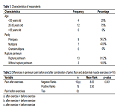Combination of pelvic floor and abdominal muscle exercises to reduce perineum pain in postpartum mothers

Downloads
Additional Files
Background: Perineum Pain risks a lack of rest time which will affect the reduction in milk production and can interfere with the process of uterine contractions which further risks the occurrence of subinvolution. Previous studies have only examined pelvic floor muscle exercises, however, they have not been combined with abdominal exercise. The combination of abdominal muscle exercises can increase the effectiveness of pelvic floor muscle performance so that it will improve blood circulation and make muscles relaxed and inhibit the increase in lactic acid due to muscle spasms and ischemic tissue that makes pain.
Objective: To find out the benefits of a combination of Pelvic Floor Muscle and Abdominal Muscle Exercises to Reduce Perineum Pain in Postpartum Mothers
Methods: This is a pre-experimental research with one group pretest-posttest design. The sample used was 16 people with random techniques. Statistical analysis was done by Wilcoxon while pain measurement was done by VAS instrument.
Results: The results showed the mean of the pain before doing the exercise was 3.94 and the mean of the pain after doing exercise was 1.62. From statistical test results by Wilcoxon test, it obtained a significance value of 0.003 (p <0.05). Thus it was concluded that there were significant differences in perineum Pain before and after Pelvic Floor and Abdominal Muscle Exercises
Conclusion: Combination of pelvic floor muscle exercise and abdominal muscle can reduce perineum pain in postpartum mothers.Authors retain copyright and grant the journal right of first publication with the work simultaneously licensed under a Creative Commons Attribution-NonCommercial 4.0 International License that allows others to share the work with an acknowledgement of the work's authorship and initial publication in this journal.
Authors are able to enter into separate, additional contractual arrangements for the non-exclusive distribution of the journal's published version of the work (e.g., post it to an institutional repository or publish it in a book), with an acknowledgement of its initial publication in this journal.
Authors are permitted and encouraged to post their work online (e.g., in institutional repositories or on their website) prior to and during the submission process, as it can lead to productive exchanges, as well as earlier and greater citation of published work (See The Effect of Open Access).

This work is licensed under a Creative Commons Attribution-NonCommercial 4.0 International License.











